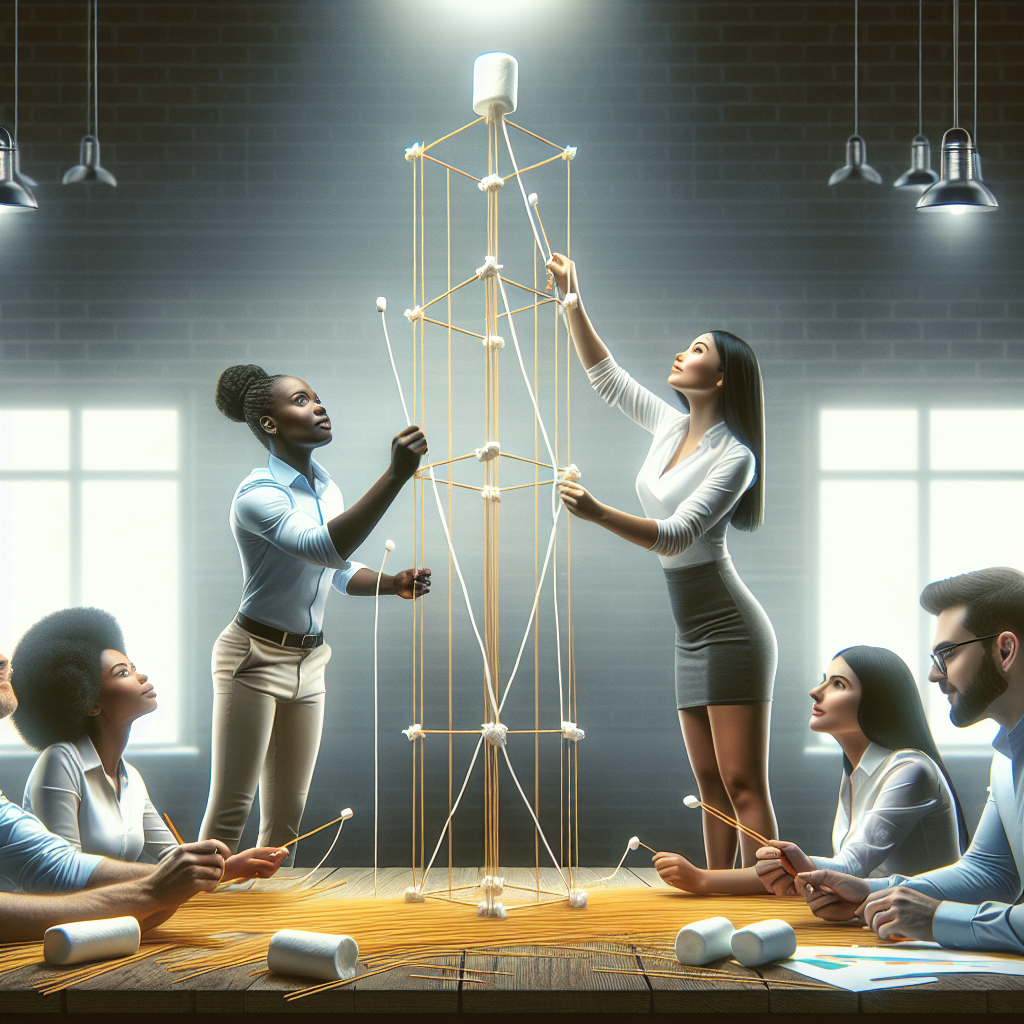
Thought Machine is a fintech company that builds cloud-native technology to revolutionize core banking and payments. The company was founded in 2014 by a former Google employee, Paul Taylor. Its mission is to eliminate legacy technology from the world's banks in a comprehensive and lasting way. To achieve this, the company is rebuilding the fundamental technologies of banking.

The current situation at Thought Machine is one of rapid growth, as the company expands its offerings and increases its global reach. Innovation is crucial not only for expanding beyond the tier 1 and 2 bank segments with complex deployments, but also for staying ahead of competitors who may develop similar products. To ensure the company's survival and prosperity in the coming decade, an innovation strategy is necessary. Adopting design thinking successfully is a prerequisite for sustained vitality
The innovation strategy involves using design thinking principles to drive innovation within our organization. This means understanding the needs and desires of our banking customers and using that knowledge to create products and services that meet those needs in new and exciting ways. Through this approach, Thought Machine can develop banking products and services that have the potential to disrupt the banking market.
The focus of this innovative initiative is on developing new core banking product features and functionality, exploring new use cases to meet customer needs and remain competitive, improving operational efficiency by reducing cloud hosting costs and CPU resources. As a result of that, we would be increasing market share by capturing a larger market share in APAC, including Singapore, Japan, Korea, Vietnam and Japan, and expanding the number of clients from Europe to the new region. To develop an innovation strategy for my management team at Thought Machine, I would recommend the steps below.
Firstly, we need to identify the greatest pain points of banking customers that Thought Machine can alleviate. In a sales and client-facing environment, backend engineers can speak directly to banking customers and observe them in their offices, rather than sitting in the Thought Machine office and imagining what they want. By conducting user interviews, we can often shatter preconceptions. While our backend engineers may be technology-oriented, my experience of talking to business users in banks has shown that technology is not considered a competitive edge by them. The true pain point is their inability to provide new services to their customers due to the complexity of legacy technology. The focus is not on the technology itself, but on the ability of new technology to enable them to offer new financial services in the market.
After speaking with many banking customers, we have a better understanding of their pain points. Despite the proliferation of cloud infrastructure in the market, most of the world's top retail banks are still running on legacy systems, such as IBM mainframes. Banks are burdened by the old systems they are hard to maintain. Legacy stacks do not support the ways of working needed to rapidly deliver new financial products to customers. Significant time and resources are wasted because the old services are tightly coupled, introducing the risk of cascading issues. Moreover, the banking industry is highly regulated, and senior management of banks are often unwilling to take risks and make changes, as they are concerned about reputation damage.
After identifying the pain point, we can use divergent thinking to brainstorm ideas and apply design thinking principles for prototyping and testing. The best way to maintain momentum is to get code into the hands of banking users as quickly as possible. This will help determine whether the solution has potential or not and, if so, what needs to be done to enhance it. The goal of prototyping is not to achieve perfection, but to create something good enough to take to customers and gather feedback. For instance, instead of requesting a high-risk big bang migration of their existing core banking system, banks could conduct a parallel run and move only a portion of new products in our platform to test our solutions.
There are different types of innovation outcomes we could pursue, and the one we have chosen is radical innovation, which requires new technical competencies while leveraging our existing business model. In today's world, banks are still using legacy technology on mainframes in on-premises data centers, while our cloud-native core banking product transforms the infrastructure. Our innovations include product innovation, where we offer high configurability and a single source of truth for data and real-time reporting. The new features and functionality we explore will enable banks to achieve something new in the market, meet customer needs, and stay competitive.
Additionally, our new technology can provide process innovation benefits to the banks, including lower costs and higher levels of agility than legacy core systems using mainframe technology. The operational processes would be more efficient because the banks would not need to hire developers to write legacy programming languages such as Pascal or Cobol. Additionally, hosting costs would be much lower than with legacy mainframe systems. As for business model innovation, we can leverage our existing licensing model, and we are also exploring strategic partnerships to increase our market share. However, the extent of our expansion is constrained by factors such as regulatory requirements and legal compliance.
Furthermore, I need to foster a culture of innovation by encouraging experimentation rather than relying solely on PowerPoint presentations. I should create an environment where employees feel empowered to take risks and think creatively. Collaborating with partners in the fintech ecosystem could help us create innovative solutions that meet the needs of our banking customers.
I can measure the success of our innovation efforts by tracking key performance indicators such as customer satisfaction ratings and feedback on how easily our product accommodates most of the bank use cases and payment needs out of the box. I can also compare the number of new features developed and released to the usage and adoption rates for the client's implementation.
Another KPI would be the return on investment, which would be reflected in a low cost-to-income ratio compared to our peers. We can achieve this by leveraging our cloud-native architecture, for example, by reducing hosting costs and CPU resource usage. I should also track revenue growth by monitoring the number of high-quality banks that sign up with us, including the number of new clients acquired, the amount of license revenue generated per client, and our market share in the APAC region compared to our competitors.
To lead, manage, and inspire innovation in Thought Machine, I would recommend the following actions. Firstly, I would lead by example by fostering a culture of innovation and taking risks myself, such as open to feedback and conduct brownbag sharing sessions for failure lesson learnt. I would also empower other employees to take risks and think creatively by providing them with the necessary resources and support to innovate, such as using recognitions, rewards, promotion and bonus as the incentive. I would encourage collaboration both within and outside the organization to drive innovation, by breaking down the silos and conducting role rotation. I would recognize and reward employees who come up with innovative ideas and solutions, celebrate our successes and use them as inspiration for further innovation.
The implementation of an innovation strategy may face some potential challenges and risks, including employee resistance to change, with most employees unwilling to take risks or think creatively. Without a communication plan, employees would feel uncomfortable sharing their concerns and questions about the changes. Without explaining the why on a change is necessary, employees would be confused about the purpose of the changes. To make things worse, without proper training and support on change management, there are no effective ways to alleviate concerns and increase confidence in new processes and new technologies introduced. Change would fail to be implemented without buy-in and taking ownership of the changes.
Innovation requires resources, but there is a shortage of funding and other human resources to support innovation efforts. Additionally, undervaluing and underinvesting in the human aspect of innovation is another common barrier. Our top management often put the best technical people in charge rather than the best leaders. These technically oriented managers then mistakenly assume that good ideas will speak for themselves, so they neglect external communication. They also prioritize tasks over relationships, missing opportunities to enhance the team chemistry necessary to turn undeveloped concepts into useful innovations.
Moreover, teams dedicated to innovation initiatives often face conflicts with the rest of the organization. As a client engineering manager, I am responsible for my team's ongoing operations and sometimes may hear feedback about the innovation team as unproductive, while the innovation team may dismiss the operations team as bureaucratic. It is common to separate the two groups, but it is problematic when a group is asked to innovate in isolation. Nurturing a healthy partnership can be challenging. Conflicts between innovation initiatives and ongoing operations are normal and can easily escalate. Tensions can turn into rivalries, which in turn can lead to hostilities and office politics, ultimately leading to a negative impact on Thought Machine’s long-term viability.
To manage these challenges and risks, we could implement the following strategies. To overcome resistance to change, we should create a communication plan to explain the "why" and the benefits of innovation to all employees and help them understand how it can benefit both the organization and them. We should not neglect communication and relationship building outside of the team. Innovators cannot work in isolation if we want our ideas to be successful. We must build a coalition of supporters who will provide cover for the project, speak up for them in meetings, and sponsor the innovation to move into the next stages.
Furthermore, selecting the right individuals and establishing new working relationships are fundamental steps in building an effective innovation team. Having a diverse background, including outsiders, can be beneficial as outsiders naturally challenge assumptions since their biases and instincts are rooted in their previous experiences.
As a leader, it is important for me to address conflicts by continuously reinforcing a relationship of mutual respect. The differences between the operation team and innovation team may be significant. As a client engineering manager, the performance metrics for the operation team are focused on efficiency, accountability, timeliness, adherence to budget, and meeting client requirements. In every project, our approach is to make every task, process, and activity as repeatable and predictable as possible to ensure project success. However, the key performance indicator (KPI) for the innovation team should be the opposite. Innovative initiatives are by nature non-routine and uncertain. These incompatibilities can create conflicting dynamics. To manage these challenges, we should align our innovation efforts with the priorities of Thought Machine and ensure they are consistent with our overall strategy. Additionally, we should celebrate our successes and use them as inspiration for further innovation.
A proposed action plan for fostering innovation within the organization would be to establish an innovation team, where employees can experiment with new ideas and test new products and services. This would be staffed with a dedicated group of business analysts and engineers who can closely collaborate with banking clients to develop and prototype new ideas. The innovation team would be a sub-division within my client service department, with minimal overhead and more control and accountability within my team, allowing for investment in the success of the initiative. A senior engineer would take on a dual role as the subject matter expert, which would keep them engaged and challenged. As they have existing strong relationships within the same office as other teams, they can communicate effectively. The team would conduct user research on new core banking features, develop tooling to lower costs, and support the sales team in securing new deals in APAC. The team would also introduce design thinking culture to the wider company.
The team is sponsored by the Chief Operating Officer (COO) and led by the product manager who is responsible for communicating goals and priorities. The team consists of a cross-functional team with the following main roles: 3 Senior Engineers for product development who are responsible for the quality of its technical outcomes, 2 Business Analysts for requirement gathering, and 1 Architect for the design of the platform. The amount of time they dedicate in a year is broken down below (assuming 260 working days in a year): Product manager: 200 man-days (77% per year), Architect: 100 man-days (38% per year), Business Analyst: 250 man-days (48% per year per person), and Engineers: 400 man-days (51% per year per person). This would be a significant amount of time commitment and may require them to be fully focused and remove distractions.
In terms of funding, a total investment of SGD $1,566,250 is needed for these initiatives to cover the cost of resources for forming the innovation team. The breakdown is as follows: Product manager - 200 days x $1680 daily rate = $336,000, Architect - 100 days x $2100 daily rate = $210,000, Business Analyst - 250 days x $1505 daily rate = $376,250, Engineer - 400 days x $1610 daily rate = $644,000. Operational costs are not included because they will be taken from the normal budget and no additional funding will be required for this initiative.
There are several existing assets present in Thought Machine that we could leverage on. Firstly, we have technical capabilities on the product development team, with experienced developers and product managers. We have been building and scaling cloud-native core banking products for nine years. This technical expertise is essential for developing new features and functionality. Secondly, we have existing relationships with banks and our customer base, who can provide insights into their existing hosting costs compared to the new solution we provide. The financial resources from the bank are secure and significant, allowing us to support and invest in our product research. Thirdly, we have existing partnership engagements, such as Google Cloud and Microsoft Azure, that can support our efforts to expand in the APAC region and leverage our brand reputation in the market. Implementation partners, such as Accenture, would also help us to attract new clients.
There are four phases of activities. In the first phase, a 2-week workshop will be conducted to define the scope and problem statement using "How Might We" technique, set objectives, brainstorm ideas with divergent thinking, and identify key target users. The team will conduct user research and interviews to understand the customers in APAC regions, create a user journey map and persona, and identify their needs and pain points. The insights gathered will then be synthesized to identify solutions.
In the second phase, there will be an eight-week proof of concept (POC) period. This involves exploring and prototyping new ideas for new core banking product features, as well as proving their usability. Real-world scenario testing will be conducted to validate the feasibility and effectiveness of these new features.
In the third phase, it will take six weeks to build the minimum viable product (MVP). The architecture design will focus on finding ways to lower cloud hosting costs and CPU utilization. The team will analyze the data and identify areas of improvement. They will reach out to partners in the APAC region to explore sales opportunities with digital banks and traditional banks. The team will communicate with key stakeholders and select tools, such as chatbots, for implementing the new product features. The MVP will include a basic version of the product with essential features to meet customer needs and address pain points. The team will lower hosting costs by shutting down underutilized resources, developing tools for auto-scaling resources, and validating assumptions. They will open an office in the new region and actively participate in networking events with partners, focusing on feedback and improving with each iteration.
In the final phase, there will be a 3-month pilot launch. The team will soft launch the product features to a selected group of clients to collect user feedback for product improvement. The team will analyze the problems encountered by the clients and make necessary adjustments. The team will also recalculate the cloud hosting cost estimation using the new data, monitor performance, and reliability in the real-world environment. The team will then sign the legal contract for closing deals with new clients. Finally, the team will evaluate the success and desired outcomes of the pilot launch.
In conclusion, Thought Machine's innovative strategy outlined in this plan is aimed at addressing key pain points of customers and positioning the company for growth in the APAC region. With a focus on user-centric design and strategic partnerships, Thought Machine aims to build a cutting-edge core banking product that provides a competitive advantage in the market. The plan proposes a structured approach to innovation, with four distinct phases aimed at identifying opportunities, testing solutions, and launching a minimum viable product. By dedicating significant resources to this effort and actively engaging with key stakeholders, Thought Machine can create a product that meets the evolving needs of customers in the region, expand our customer base, and drive significant growth in the coming years. The management team should carefully consider the recommendations outlined in this plan and take the necessary steps to implement them effectively, which is the key to beating competitors. Disrupt or be disrupted.





